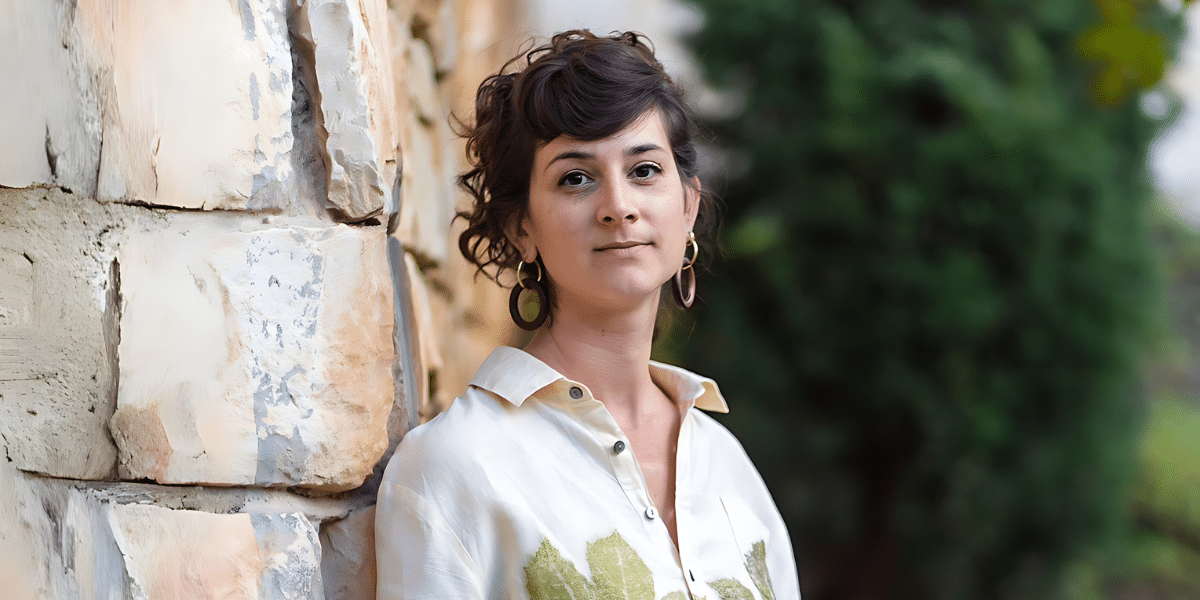By: Chiara Accardi
The textile art industry is a place where old traditions meet new ideas. This field thrives on keeping ancient techniques alive while also embracing modern creativity. Artists in this area are driven by a love for sustainability, creativity, and the impact their work has on the environment and society. The intersection of tradition and innovation creates a dynamic space where artists like Tula Weissberg can shine.
We are pleased to feature Tula Weissberg, a respected textile artist who has made a big impact in this industry. Tula’s focus on handmade creations and natural materials shows her dedication to the environment and the uniqueness of her art. Her journey is a story of change and growth. By merging old and new, Tula brings a fresh perspective to textile art, inspiring others to appreciate and protect the world around us. Her unique approach has not only made her a standout artist but also an advocate for sustainable art practices.
Your work often references “getting out of your shell.” Can you share a personal experience that embodies this concept and how it influenced your art?
I feel that every time I approach to make a piece of fabric I give myself to the unknown. In Judaism there is a concept that says – the hidden is much more than the visible. Every leaf, plant and bark can produce colors and shapes, I can’t really know what exactly the result will be. It’s like a seed that you plant in the ground, water, nurture and invest and you don’t know if the seed will eventually grow into an oak tree or not. Getting out of the shell is the belief and acceptance to be in uncertainty. That’s where the magic happens.
In a world of digital art and mass production, what draws you to the tactile, time-intensive process of handmade textile creation?
In my view, fast fashion and the digital world as a whole tell us unreal stories about what we want and need. We are pressured to buy products we don’t need and we get lost. Losing who we are and our uniqueness. Textiles have always fascinated me and I see textiles as a source of survival like food. We are wrapped in textiles from the moment we are born until the day we die and also at burial. The traditional handwork brings us back to our source – to nature. There you can see that each material is special and different and there is a place for everyone. Diversity creates healthy harmony. I believe it is the same with us humans.

Your art seems to blur the line between functional craft and abstract expression. How do you navigate this boundary, and what does it mean for the future of textile art?
Blurring boundaries allows new questions and new discoveries. I don’t know what the future of the textile industry is. I just know that it is possible otherwise – you can create a fabric or garment that supports the human body system, supports the natural system together with simple and stylish beauty.
The concept of transformation is central to your work. How do you see your art transforming the perspectives of those who engage with it?
Did you know that avocado seeds produce a pink color? When you begin to understand that what you see is not necessarily reality, you understand the concept – the hidden is much more than the visible. There is room for exploration, playfulness and surprise. My art creates a new conversation about what is possible in our reality. What is more real than seeing a leaf that has transferred the active ingredients inside it and absorbed into the fabric like a unique fingerprint?
Your use of natural materials is well-known. Can you share an unexpected or unconventional material you’ve worked with and the story behind its incorporation into your art?
Oak gall is a wonderful thing. An encounter of an insect with the oak tree that produces a very unnatural pregnancy, the tree produces like a ball full of proteins to nourish and protect the insect eggs that are inside it. A kind of supernatural cooperation. The color produced from it – dark purple (it isn’t common), which I use in some of my works out of a sense of wonder.
In ancient times, oak gall was used to produce ink for writing.
If your artwork could speak, what message would it whisper to the world about our relationship with nature and ourselves?
I hear the Earth calling us to come home. She will take care of us, love us, clothe us, feed us. She has everything. She just asks that we respect her and love her back. Spot taking all of her resources and keeps throwing Non-biodegradable garbage. This planet is amazing; it is our home. Let’s take care of it together.
Published by: Holy Minoza

















